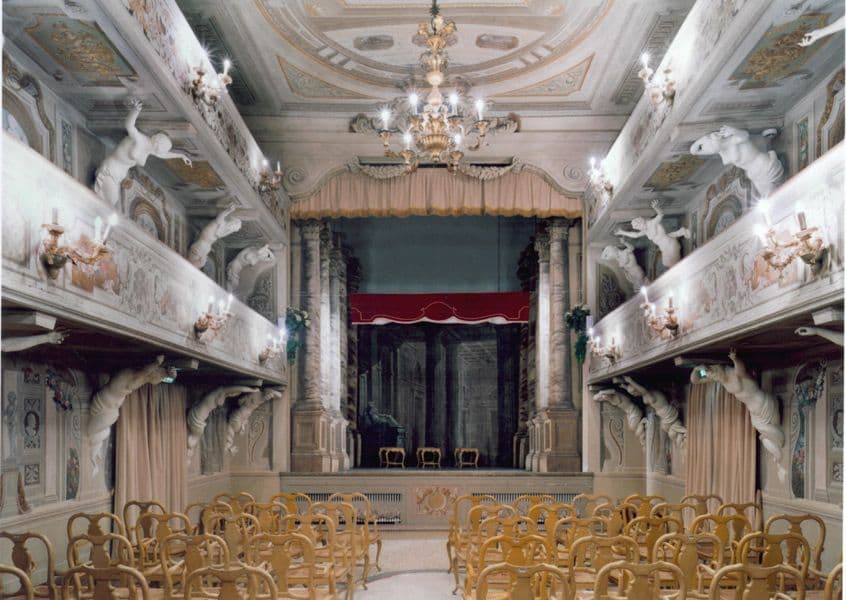Vasco Araújo
Year born:
1975
Location:
Born in Lisbon, Portugal
Website:
Working in a wide range of media––installation, film, sculpture, performance, and photography––Vasco Araújo explores issues of identity and cultural stereotypes. Before becoming a visual artist, he trained as an opera singer, and the influence of voice, gesture, and storytelling permeates his work. Veering from standard storytelling arcs, Araújo digs deeply into literature, history, and philosophy to provide the perspective of “the Other.” The rich history of gender flexibility in opera informs many of Araújo’s works. Diva, a Portrait, 2000, features the staging of a prima donna’s dressing room with a nod to the history of men playing women’s roles in opera. At first glance, we see a dressing table, bouquets of flowers, clothes, and bottles of perfume; on closer inspection, we find among these objects masculine accoutrements such as razors, aftershave, and men’s shoes. The diva’s double identity alludes to the elasticity of many masculine and feminine roles throughout opera history. We are reminded that the audiences of early opera were attuned to, and appreciative of, the performance of gender confusion. In his video piece Recital, 2002, we see the artist himself, dressed as a woman, appearing to expressively sing arias from operas including Wolfgang Amadeus Mozart’s 1791 La clemenza di Tito and 1786 Le nozze di Figaro, and Gioachino Rossini’s 1813 Tancredi. However, the sound of the singer’s voice is absent. Instead, the arias are overlain with a soundtrack in which a woman’s voice dispassionately recites the emotional lyrics that speak of life, afterlife, the underworld, and unspeakable bereavement. Recital merges the comedic undercurrents long associated with gender reversals in opera with the power, sincerity, and poignancy of the librettos. Far de Donna, 2005, is one of Araújo’s most complex musings on gender and opera. The title literally means “to play as a woman.” Using male singers to play female parts, Araújo spins the story of a mother who loses her voice just as her son discovers the potential of his own, as if her expressive power had been transferred to him. On a single screen, the video pairs up the son’s castrato vocal training with the mother’s narration of their story in sign language. Araújo focuses on the poetry of the mother’s physical movements, converting her signing to English subtitles. Araújo leaves us wondering what might be lost in the multiple translations within the intertwined realms of gender, music, gesture, and words.
